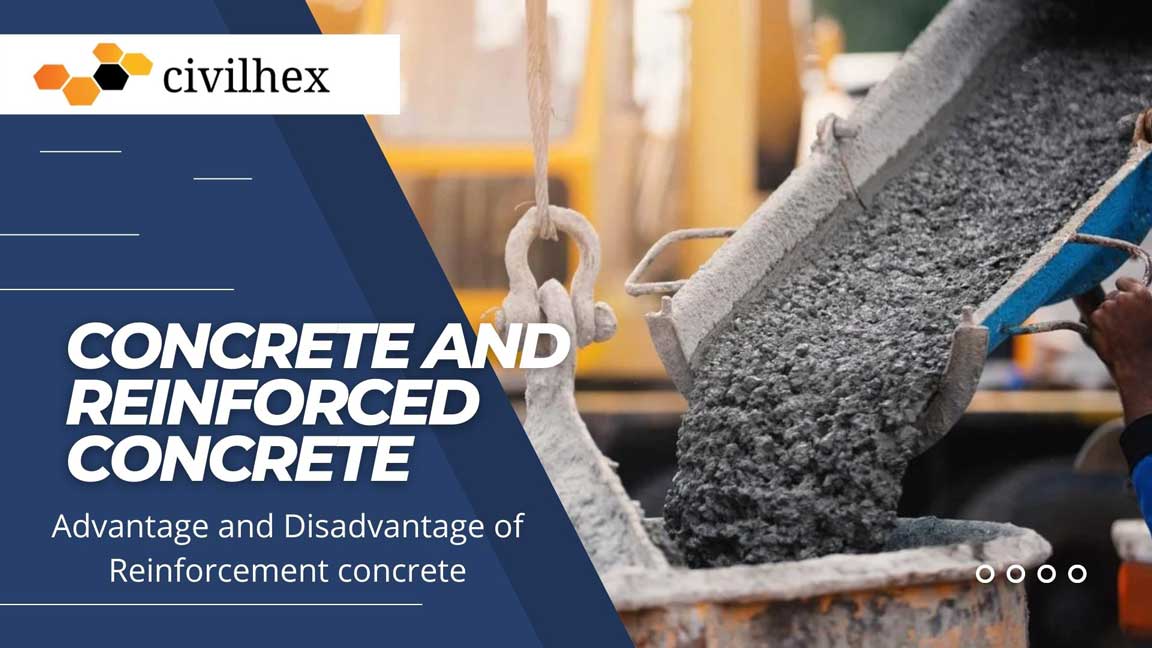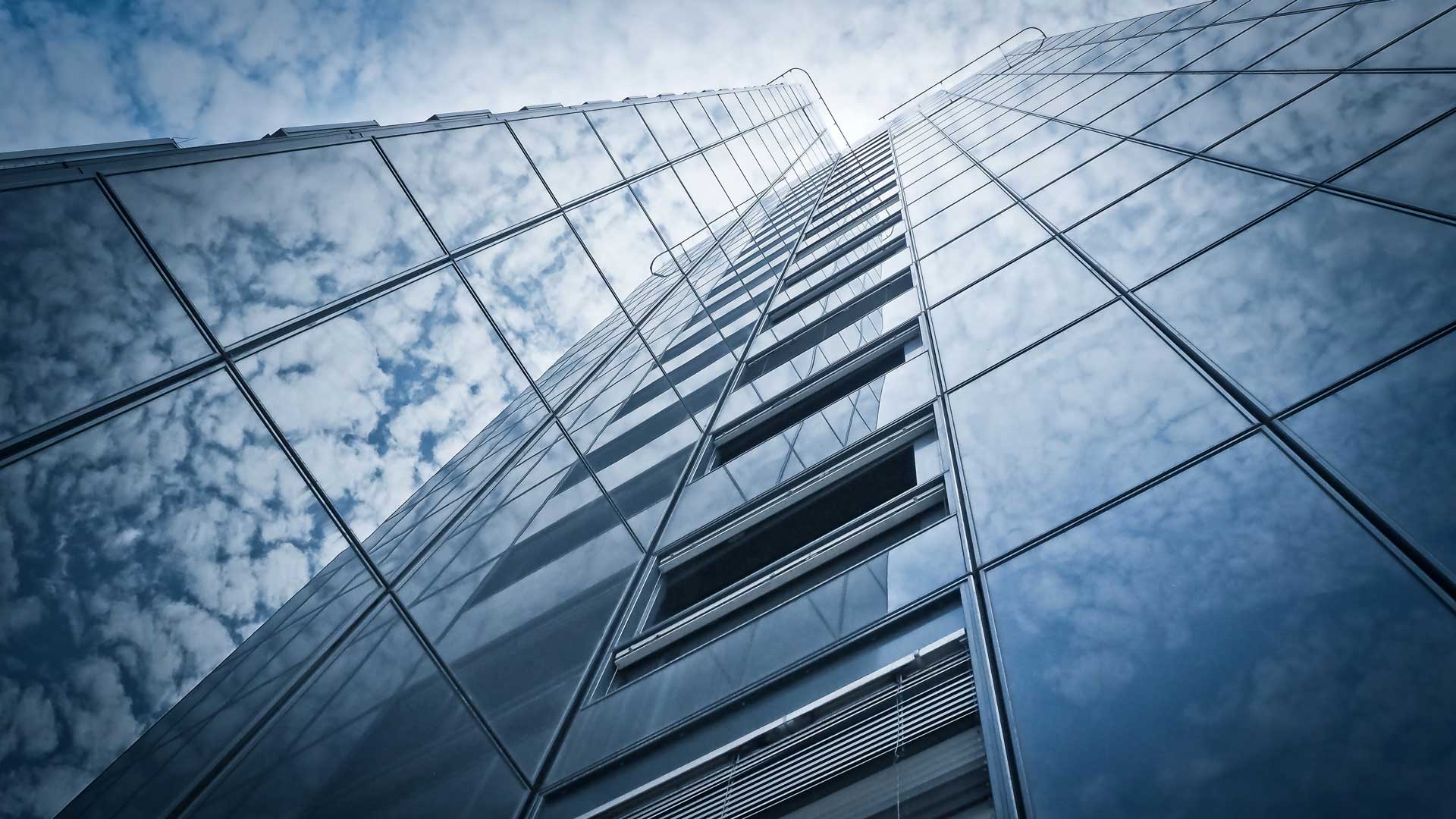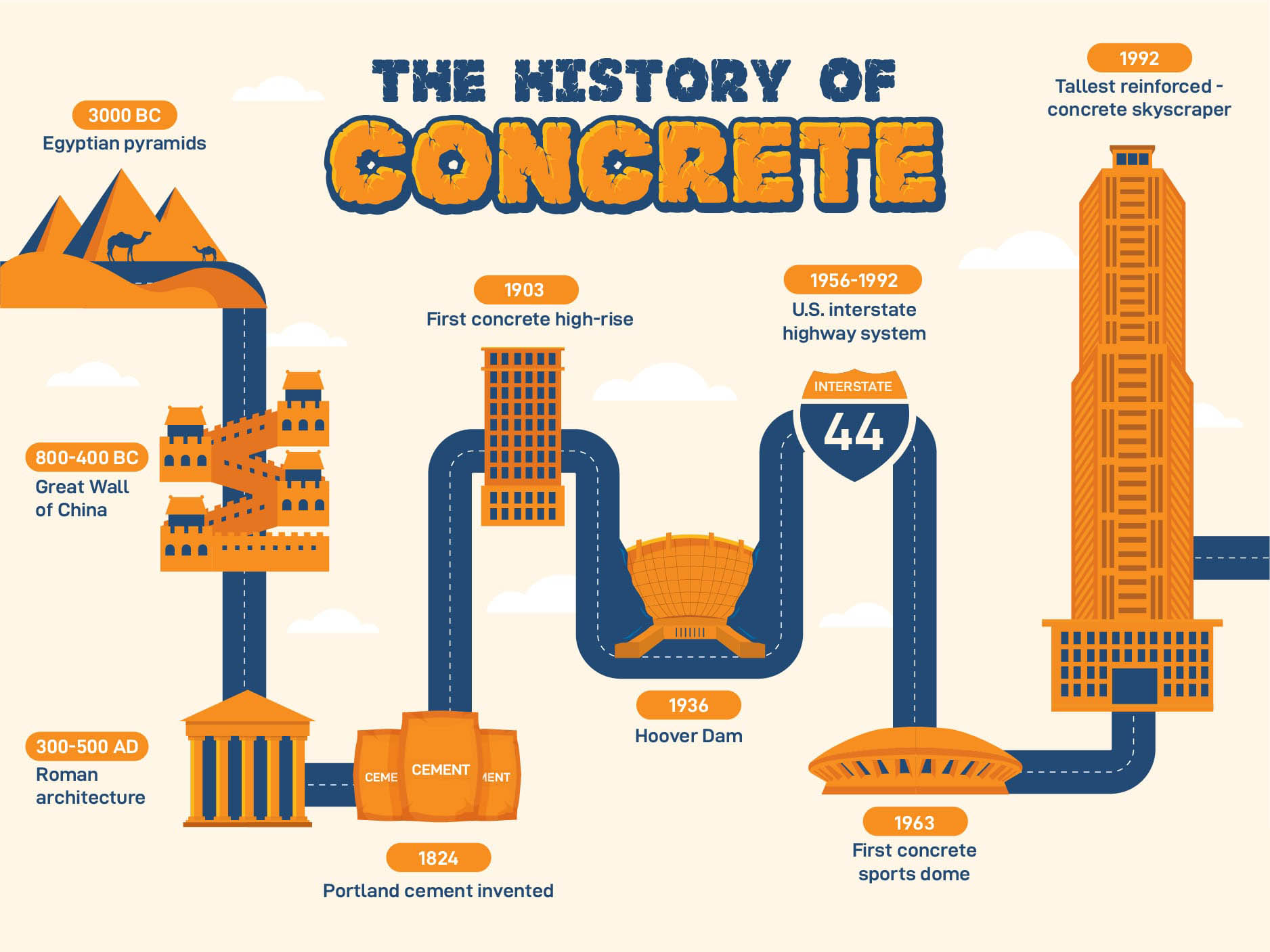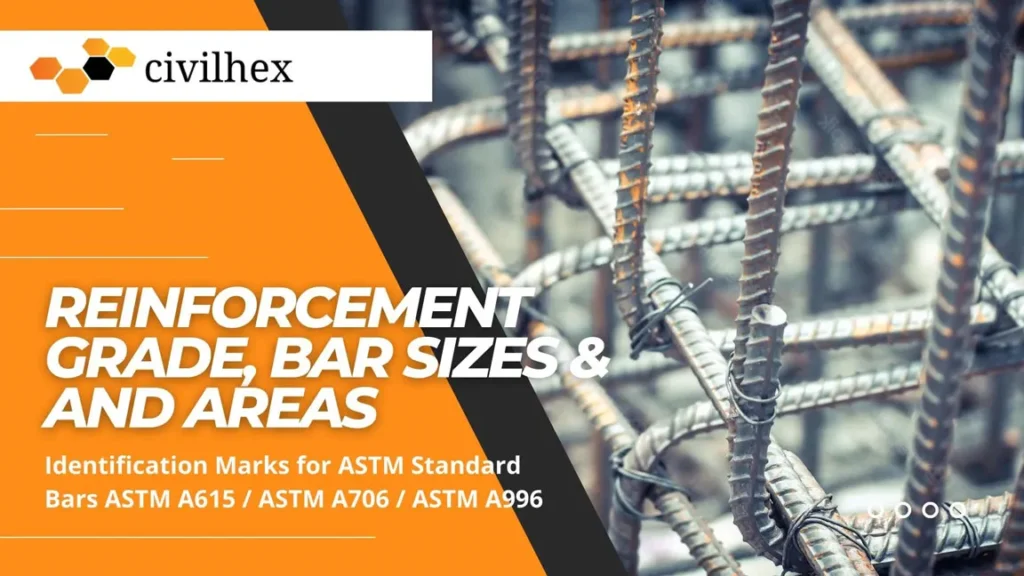Concrete and Reinforced Concrete

What is concrete made of?
Concrete is a stonelike material made by a definite proportion mixture of sand, gravel, or other coarse aggregate held together in a stonelike mass with a paste of cement and water.
Sometimes one or more admixtures are added to it for changing certain characteristics of concrete such as its durability, workability, and time of hardening.
As with most rocklike substances, concrete has high compressive strength, but it has very low-tension strength. For increasing its tensile strength capacity, steel reinforcement bars provide into concrete.
What is reinforcement concrete?
Reinforced concrete is concrete that has steel reinforcement bars placed in it to increase its tensile strength capacity.
steel reinforcement is also resisting compression forces and is mostly used in columns as well as in other situations.
Advantages of Reinforced Concrete
What is the advantage of reinforced concrete?
Reinforced concrete is the most common and important material in the construction industry. It is used in almost all civil engineering structures, large and small- buildings, bridges, pavement, retaining walls, tunnels, dams, drainage, irrigation facilities, tanks, and so on.
The tremendous success of this universal construction material of concrete can be understood quite easily if its numerous advantages are considered. These include the following:
- It has high compression strength per unit cost compared to the other construction material.
- Reinforced concrete has great fire resistance. In fact, it is the best fire resistance material available on the market. During the contact of fire, members with a satisfactory cover of concrete over the reinforcing bars suffer only damage to the surface without failure.
- Reinforcement concrete structures are very rigid in behaviors.
- Reinforcement concrete structure has a low maintenance cost.
- reinforcement concrete has great resistance to the action of water. This is the best material where waterproofing is needed.
- As compared to other materials, reinforcement concrete has a very long service life.
- The strength of the concrete does not decrease with time but actually increases over a very long period, measured in years because solidification of the cement paste is a lengthy process.
- Generally, it is the only economical material available for floor, slabs, footing, basement walls, piers, and similar applications.
- Concrete has a special feature that is its ability to be cast into an extraordinary variety of shapes from simple slabs, columns, and beams to great arch and shells.
- In most areas, concrete takes advantage of its inexpensive. Sand, gravel, and water, this local material easily can get most of the area and requires a relatively small amount of cement and reinforcing steel, which may have to be shipped from other parts of the country.
- A lower grade of skilled labor is required for concrete structure as compared with other materials such as structural steel, and wood.
Disadvantages of Reinforced Concrete
What is the disadvantage of Reinforced Concrete?
To build concrete structures successfully, the designer must be completely familiar with its weak points as well as its strong point also. These include the following:
- Concrete has a very low tensile strength, so it requires extra reinforcing steel to resist tensile forces.
- To achieve the required shape of the structure, forms are required to hold the concrete in place until it gains sufficient strength to carry its own weight. Formwork is very expensive. In the United State, formwork costs run from one-third to two-thirds of the total cost of the reinforced concrete structure, on average.
- The low strength per unit of weight of concrete causes heavy members. For long-span structures, this becomes an increasingly important matter, where concrete’s large dead weight has a great impact on bending moments. Lightweight aggregates can be used to reduce concrete weight, but it increases the cost of the concrete.
- Similarly, the low strength per unit of volume of concrete means member sizes are relatively large, an important consideration for long-span structures and tall buildings.
- The characteristic of concrete varies widely if a small portion of the change in its proportion and mixing.
- The efficiency of concrete strength also depends on the placing and curing of the concrete. If it does not carefully control, then it’s hard to gain the required design strength.
- Shrinkage and creep are also a disadvantage of concrete.
You also can see the Math Problem Solution





Responses